"His among strangers." Part 1
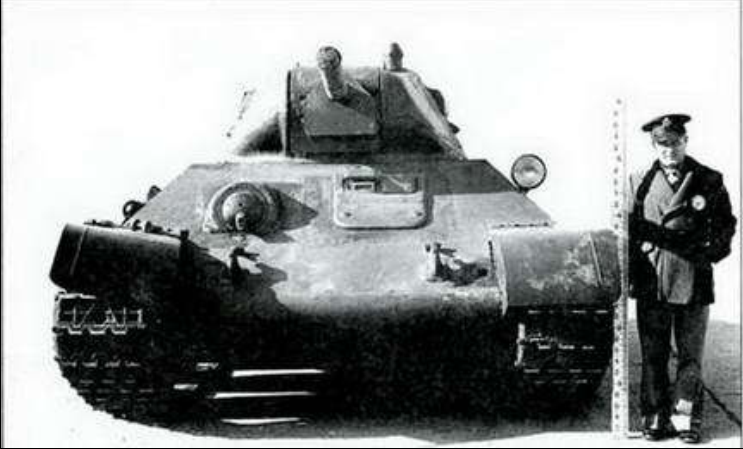
Apparently, the first examples of Soviet armored vehicles that the Americans were able to familiarize themselves with in detail were Tanks T-34 and KV. Within the framework of allied relations, military vehicles for inspection and testing were sent to the United States in the autumn of 1942. Tanks arrived at the Aberdeen Proving Ground (Maryland) on November 26, 1942. From November 29, 1942, their tests began, which lasted until September (T-34 tank) and November 1943 (KV-1 tank).
In general, Soviet tanks made a favorable impression on American specialists. However, along with such advantages as simplicity of construction, “a good and light diesel engine”, good armor for that time, reliable armament and wide tracks, there were also numerous shortcomings.
While the T-34 tank hull shape was almost perfect in terms of sling resistance, according to the Americans, its combat compartment was tight and the B-2 engine air filter design was extremely unsuccessful. Due to poor air cleaning after overcoming 343 km, the tank engine was out of order and could not be repaired. A lot of dust had jammed into the engine and the pistons and cylinders were destroyed.
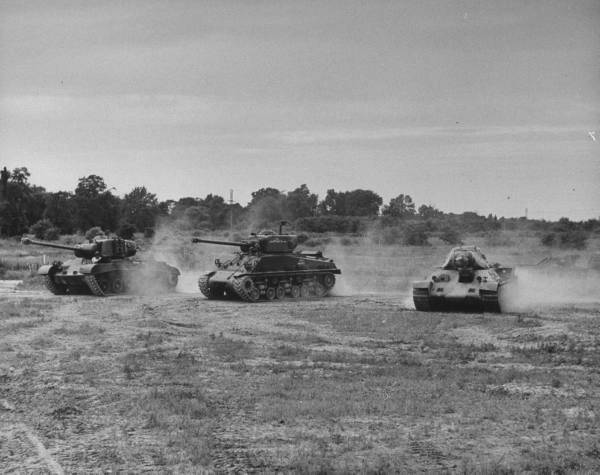
The main disadvantage of the hull was water permeability as its lower part when overcoming water obstacles, and the upper part when it rained. In a heavy rain, a lot of water leaked into the tank through the cracks, which could lead to the failure of electrical equipment and ammunition.
The transmissions on both tanks were considered unsuccessful. During the tests on the KV tank, the teeth on all gears were completely crumbled. On both engines, bad electric starters are thin and of unreliable design.
The armament of the Soviet tanks was considered satisfactory. According to its armor penetration characteristics, the X-NUMX-mm F-76 gun is equivalent to the American 34-mm M75 L / 3 tank gun. The gun was effective against the German light and medium tanks (except for the latest modifications of the PzKpfw IV) and, on the whole, was quite consistent with the requirements of the time.
The suspension on the T-34 tank was considered bad; by that time, the Americans had abandoned the Christie suspension as obsolete. At the same time, the KB (torsion) tank suspension is recognized as successful and promising.
It was noted that both tanks were made very roughly, the machining of parts of equipment and parts with rare exceptions is very bad, which affected the reliability. At the same time, the KV tank was made more qualitatively than the T-34.
At the end of 1943, the allies asked to provide them with a 57-mm anti-tank gun ZIS-2 for testing.
It turned out that the Soviet gun outperformed British and American 57-mm anti-tank guns in terms of its main characteristics.
The English 6-pound gun Mk.II was 100 kg heavier than the Soviet at a much lower initial speed and lighter projectile. The American 57-mm gun M1 was a modification of the English 6-pound cannon and was even heavier due to the longer barrel. The initial velocity of the projectile of the American guns increased slightly, but it still remained significantly lower than that of the Soviet ones. When compared with its counterparts, the Soviet gun has a very high utilization rate of metal, which speaks of its structural perfection. In addition, unlike foreign guns, the ZIS-2 is a duplex - the 76-mm divisional gun ZIS-3 was produced on its gun carriage. The release of two guns using one carriage greatly simplified and cheapened production.
The first Soviet jet fighter that fell into the hands of the Americans was the Yak-23. After the break in relations with the USSR, he was handed over to the US by the Yugoslav leadership in exchange for American military assistance. In Yugoslavia, this fighter was hijacked from Romania by a defector pilot.
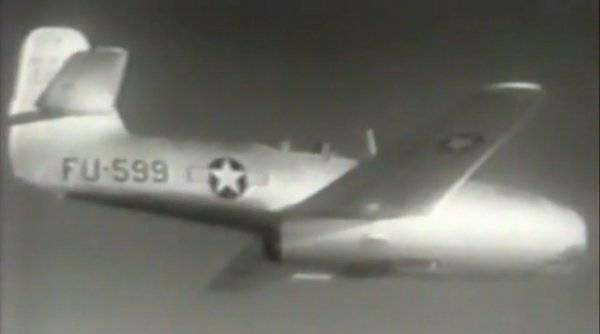
Americans rated jet Yak low. After the tests that took place at the end of the 1953 of the year, it was recognized that the aircraft - as obviously outdated - does not represent much interest. Onboard equipment was primitive by American standards. At a speed of more than 600 km / h, the plane lost track stability, and therefore the speed limit M = 0,8 was established. The advantages of the aircraft include take-off qualities, good acceleration characteristics, high climb rate.
By that time, the Yak-23 was no longer the latest achievement of the Soviet aviation industry, and the Americans knew that.
Next time, close to "get acquainted" with the Soviet weapons former allies had a chance during the armed conflict on the Korean Peninsula. The Soviet T-34-85 medium tanks, which the North Koreans used massively enough at the initial stage of the war, shocked the American and South Korean infantry.
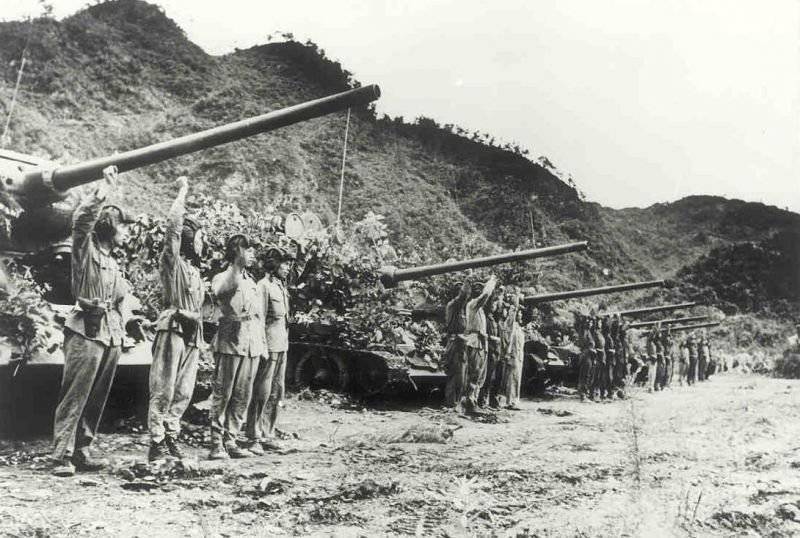
However, thanks to total dominance aviation The "UN forces" at the initial stage of the war and not always the correct use of tanks by North Koreans, the Americans soon managed to level the situation at the front. The very weak training of North Korean tank crews also played a role.
Several captured serviceable T-34-85 were tested by American experts. During the tests, it turned out that this is not the same tank as in 1942. Reliability and build quality of the machine has significantly increased. A number of innovations that improve the combat and operational characteristics. And most importantly, the tank received a new, more spacious and better protected turret with a powerful 85-mm gun.
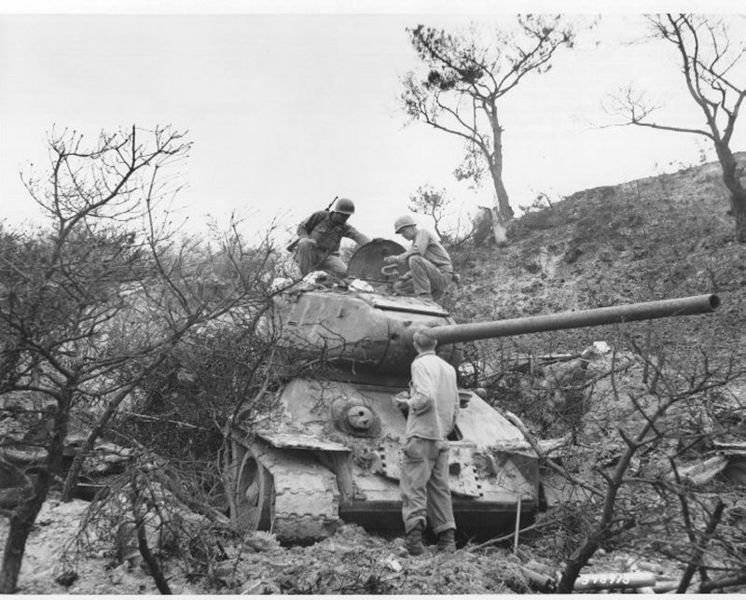
Comparing the T-34-85 with the tank M4A1E4 Sherman, the Americans came to the conclusion that the guns of both tanks can equally well penetrate the frontal armor of the opponent. The T-34-85 was superior to its enemy in the mass of high-explosive fragmentation projectiles, which made it possible to more effectively support its infantry and fight field fortifications.
Having approximately equal to the T-34-85 reservation, the Sherman outperformed it in the accuracy and rate of fire of the gun. But the main advantage of the American crews over the Korean and Chinese tank crews was a higher level of training.
In addition to tanks, the Americans got quite a few other Soviet-made weapons as trophies. US troops sufficiently highly of the Soviet submachine guns PCA-41 and PPP-43, sniper rifles, machine gun DP-27, easel SG-43, large-DSK, 120-mm mortars, 76-mm gun ZIS-3 and 122-mm howitzers M-30.
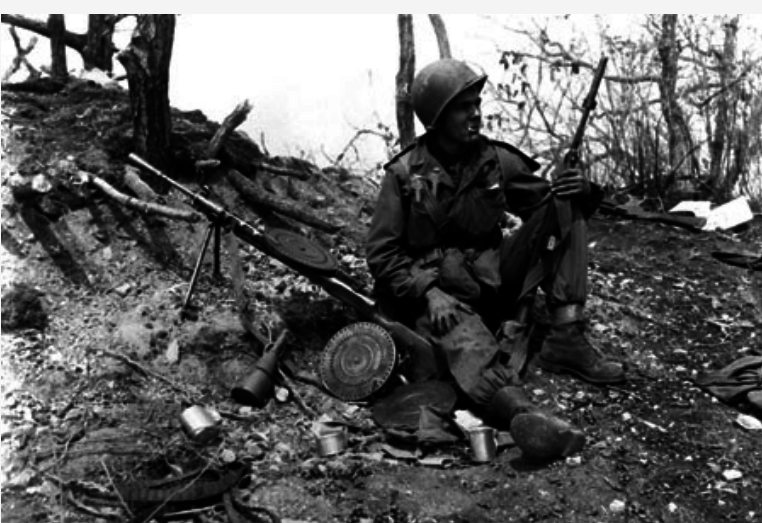
Of interest are the cases of using captured trucks GAZ-51. The Americans, who seized him in Korea, made “gantraks” and even auto-tires on its base.
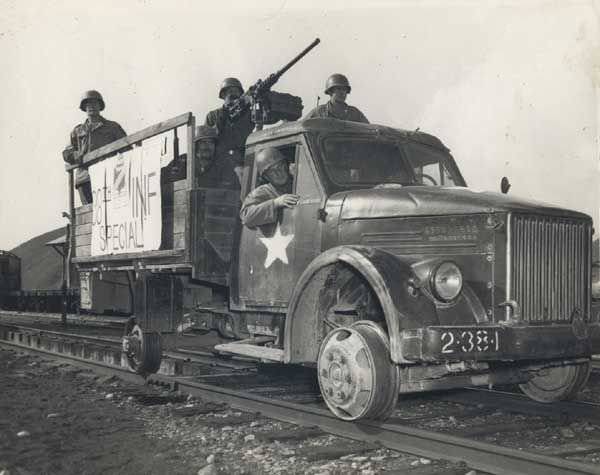
Another unpleasant surprise for the Americans was the Soviet jet fighter MiG-15. It was he who became the "stumbling block" in the path of American aviation to dominate the air in the sky of Korea.
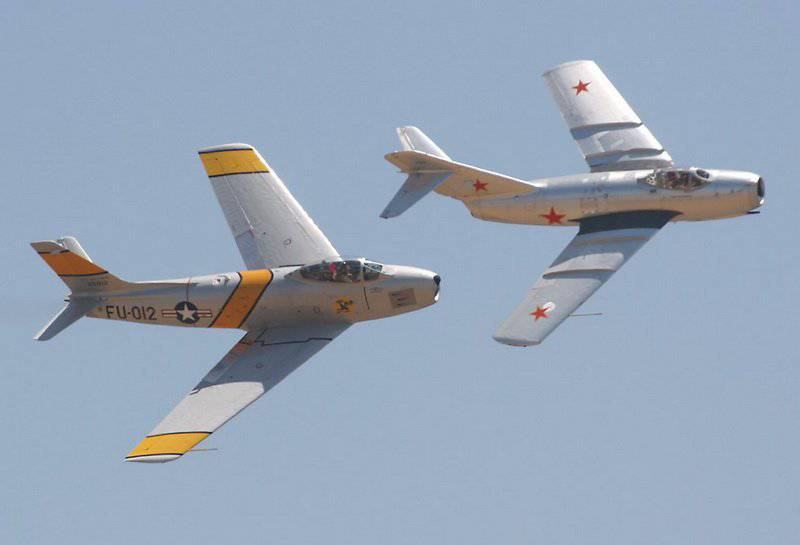
The American pilots themselves considered the jet MiG, with proper pilot training, to be very formidable opponents and called it the "Red Emperor". MiG-15 and F-86 had approximately the same flight characteristics. The Soviet fighter had an advantage in vertical maneuverability and power of weapons, yielding “Sabro” in avionics and horizontal maneuverability.
During the Korean War, the United States repeatedly attempted to capture the serviceable MiG-15 for familiarization by announcing a 1953 award in thousands of dollars in April 100 to the pilot who would provide this aircraft to the US Air Force. Only after the end of hostilities, in September 1953, the North Korean pilot No Gymsok hijacked the MiG-15 to South Korea.
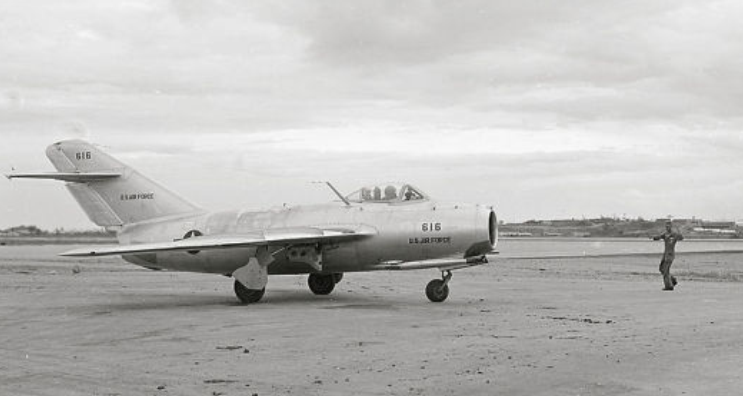
The plane was delivered to the United States and tested by the famous American test pilot Chuck Yeager. Currently, this aircraft is located in the National Museum of the US Air Force, located on the Wright-Patterson airbase near the city of Dayton, Ohio.
Initially, the 60-s of the Soviet Union began to carry out large-scale deliveries of the most modern for that time military equipment and weapons to Arab countries that are in a state of permanent war with Israel.
The Arabs, in turn, regularly supplied samples of this technique to a "potential adversary."
As a result of the Israeli intelligence operation, the captain of the Iraqi Air Force, Monir Radf, hijacked the 16 August 1966, the newest front-line fighter MiG-21 F-13 to Israel. After Israeli pilots flew around 100 hours during test flights, the plane was flown to the USA.
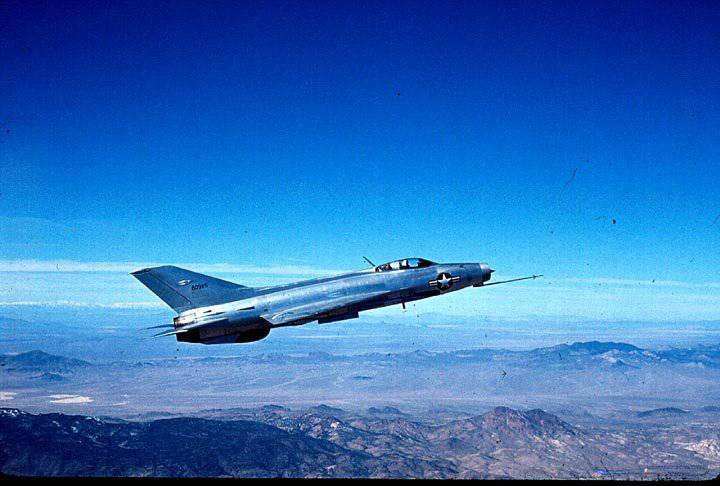
Test flights on the MiG-21 in the United States began in February 1968, in an atmosphere of extreme secrecy at Groom Lake Air Base.
Soon the Americans received a pair of MiG-17F fighters from Israel, which 12 August 1968 of the year landed at Israeli Bezet airfield due to a “navigation error”.
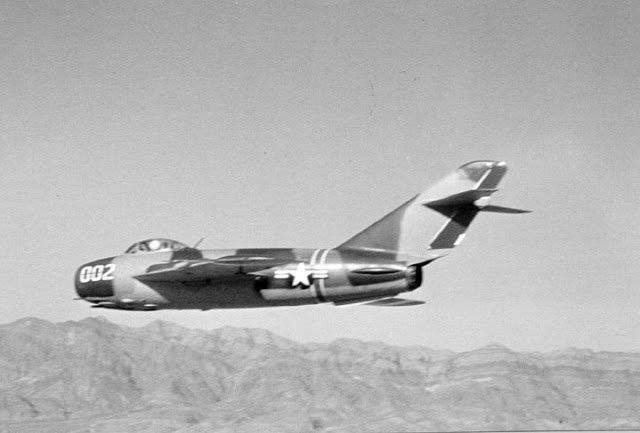
The tests of the MiG-17F at that time were even more relevant for Americans than the more modern MiG-21. By the time they coincided with the escalation of hostilities in Vietnam, where the MiG-17F at that time were the main enemy in the air.
During the “Six Day War” 1967 of the Year Only on the Sinai Peninsula, the Egyptians abandoned the whole tank with minor damage 291 T-54, 82 - T-55, 251 - T-34, 72 heavy tank ИС-3М, -NNXX-TNXXN-29 - T-76, 51 of the heavy tank EC-100M, -NNXXMNMXXMNXXXMNXXXXNUMX, XNUMX -NNXX T-XNUMX, XNUMX - T-XNUMX, XNUMX - XNUMX SU-XNUMX self-propelled artillery, a significant amount of other armored vehicles and artillery.
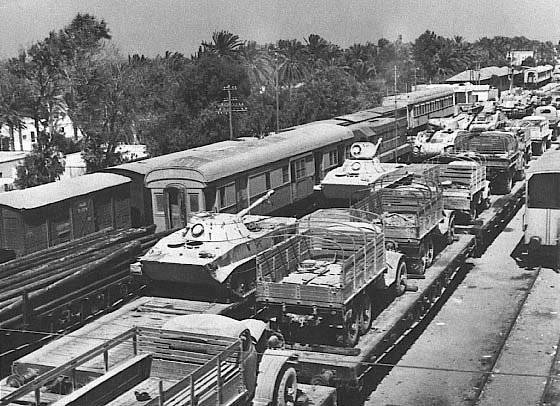
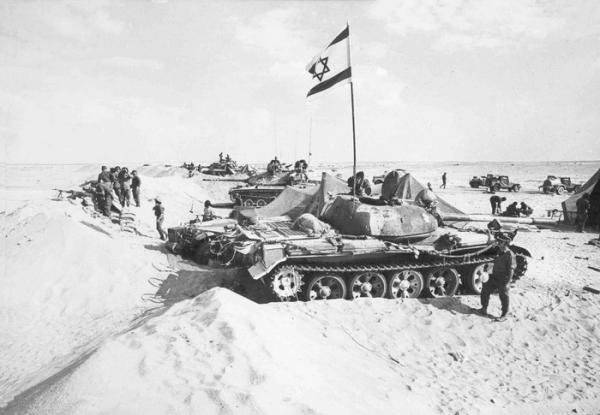
Much of this equipment was repaired and adapted in accordance with Israeli standards and subsequently used in the IDF.
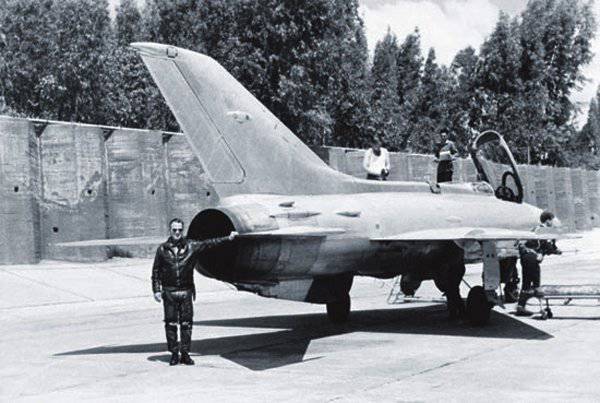
During the Israeli offensive on Egyptian airfields, MiG-21 fighters and Su-7B fighter-bombers were captured.
During the “Doomsday War” in 1973, the Israeli trophies were about 550 T-54 / 55 / 62 to be restored. Subsequently, these tanks were upgraded and re-equipped with British 105-mm guns L7 and for a long time were in service with Israel. For repair and maintenance, spare parts were removed from captured machines, partly produced in Israel, partly purchased in Finland.
Based on the chassis and hull of the T-54 / 55 tank with the turret removed in 1987, the Akhzarit armored personnel carrier was created.
The security of the machine compared with the base sample has increased significantly. The body armor protection is additionally enhanced with perforated steel sheets with carbon fibers, and a set of dynamic protection is also installed.
In addition to armored vehicles, the radar and anti-aircraft missiles of the Soviet production became the trophies of the Israelis, which was much more sensitive.
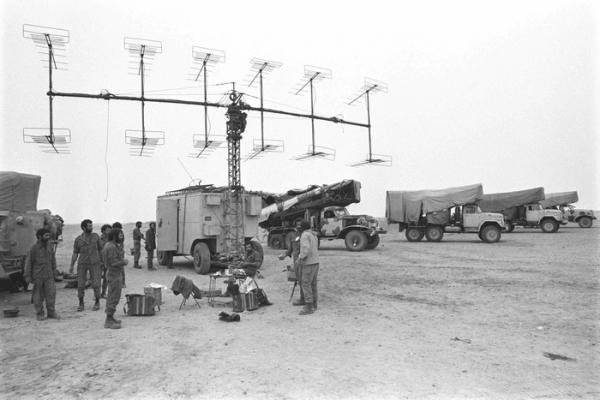
Naturally, the United States, as the main ally of the State of Israel, was given the opportunity to become familiar with all the interesting examples of Soviet equipment and weapons.
In the middle of 1972, the 57-e combat wing of fighter aviation, also known as the Aggressors, was formed in the United States at Nellis airbase. Soon the composition of this unit was replenished with MiGs obtained from Indonesia, in which a new government came to power, which curtailed friendly relations with the USSR.
All Indonesian MiGs were in an unsuitable state of flight, and American engineers had to go into “cannibalism,” collecting one from several vehicles suitable for flying. In 1972-1973, one MiG-17PF, two MiG-17F and two MiG-21F-13 were able to bring to flight status.
Operation of the MiG-17F in the USAF continued until 1982, the ex-Indonesian MiG-21F-13 flew until 1987. They were replaced with F-7B fighter jets, which, in turn, were a clone of the Soviet MiG-21, purchased in China through a front company.
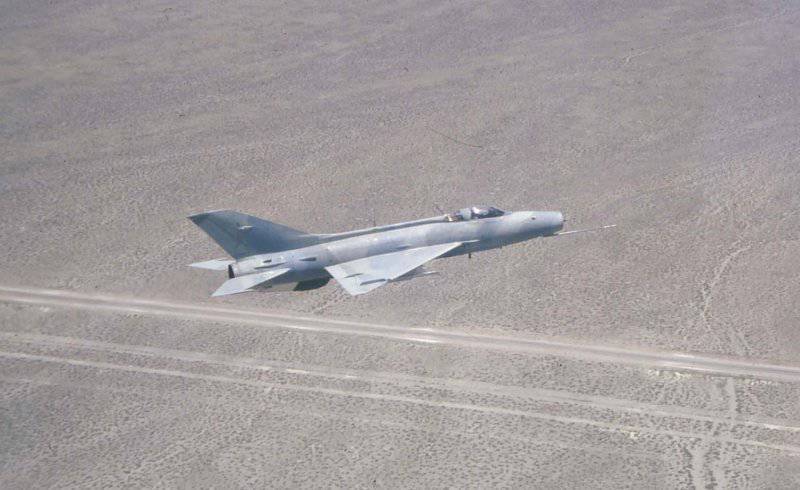
After Anwar Sadat came to power and concluded the Camp David Agreement in Egypt, there was a change of political orientation. The place of the main ally was occupied by the United States. In exchange for arms supplies, the Americans were given the opportunity to study all the military equipment supplied from the USSR.
Moreover, sixteen MiG-21МФ, two MiG-21У, two Su-20, six MiG-23MS, six MiG-23БН and two Mi-8 helicopters were sent to the USA.
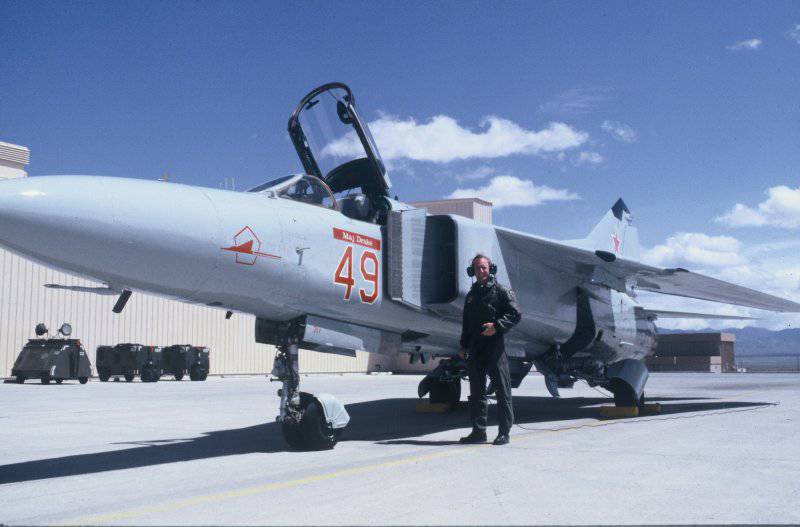
Of particular interest to the Americans were the MiG-23. During the test flights and training battles, several 23's were lost.
That, however, is not surprising, this machine was considered very “strict” and “capricious” in the Soviet Air Force. MiG-23 demanded a respectful approach, errors and superficial attitude in the process of preparing for flights did not forgive.
6 September 1976 of the year as a result of the betrayal of the senior lieutenant of the Soviet Air Force Viktor Belenko at Hakodate Airport (Hokkaido Island) landed a MiG-25П interceptor fighter.
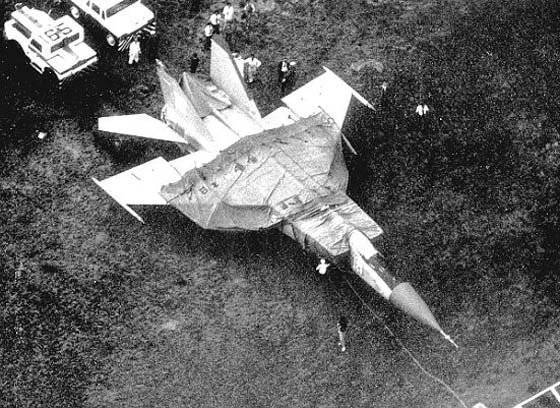
Subsequently, the Japanese authorities made an official notice that Belenko had asked for political asylum. 9 September he was exported to the United States.
The initial inspection of the aircraft was carried out at Hakodate, but it was clear that it would not be possible to investigate the MiG-25 in detail at a civilian airport. It was decided to transport the aircraft to the Hakari military airbase, located in 80 km from Tokyo. For this, the American heavy transporter C-5A was used. Wings, keels, tail, and engines were removed from the plane.
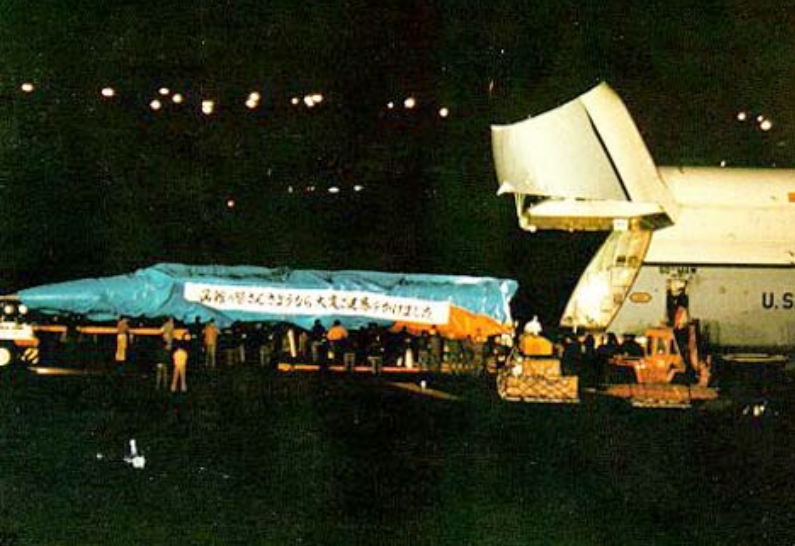
On the night of September 24, under the escort of 14 "Phantoms" and "Starfighters" of the self-defense forces of Japan, "Galaxy" flew from a civilian airfield to a military one with a precious cargo.
The aircraft was disassembled, subjected to detailed study by Japanese and American experts and returned to the USSR on November 15 of the year 1976.
Two months of research aircraft showed how badly in the West they were wrong in assessing its capabilities, technical characteristics and design features. Almost all the experts agreed that the MiG-25 is the most advanced interceptor fighter in the world. Distinctive features of which are simplicity of design, its strength, reliability, ease of maintenance and availability of piloting the aircraft to pilots of medium qualification.
Despite the fact that the share of titanium parts in the design of the aircraft was not large (in the West it was believed that the aircraft was built entirely of titanium alloys), its characteristics were quite high. The radar MiG-25P, made on obsolete, according to the American "experts" vacuum tubes, had excellent characteristics.
The electronic equipment of the aircraft, although it was considered rather primitive, but at the same time, it was noted that it was performed at a good functional level, at least not inferior to the best Western systems developed at the same time as the MiG-25 equipment.
The Soviet Union suffered very significant moral and financial losses as a result of hijacking a plane to Japan. Over the next two years, we had to upgrade electronic equipment on all MiG-25 aircraft. However, these changes were already planned earlier, Belenko’s betrayal only accelerated them. On all Air Force aircraft, changes were made to the "system of state recognition." Hijacking MiG-25 was not the first and not the last case when MiGs flew at the will of pilots piloting them to a potential enemy. But the Soviet pilot hijacked the aircraft for the first time.
In this story The MiG-25 in the USA is not over. This aircraft, capable of flying a supersonic for a long time, was still very interested in American intelligence services. Moreover, in the 90-ies, Iraqi reconnaissance aircraft MiG-25РБ repeatedly flew over Jordan and Saudi Arabia with impunity. American fighters F-15 and F-16 were unable to interfere with these flights.
During the invasion of Iraq in July 2003, at the Iraqi al-Takkadum airbase, the Americans discovered several sand-filled MiG-25RB and MiG-25RBSH.
At least one MiG-25 was taken to the US Wright-Patterson airbase. After studying the aircraft was transferred to the US Air Force Museum in Dayton.
Based on:
http://www.testpilot.ru
http://www.atacusa.com/
http://www.warbirdinformationexchange.org
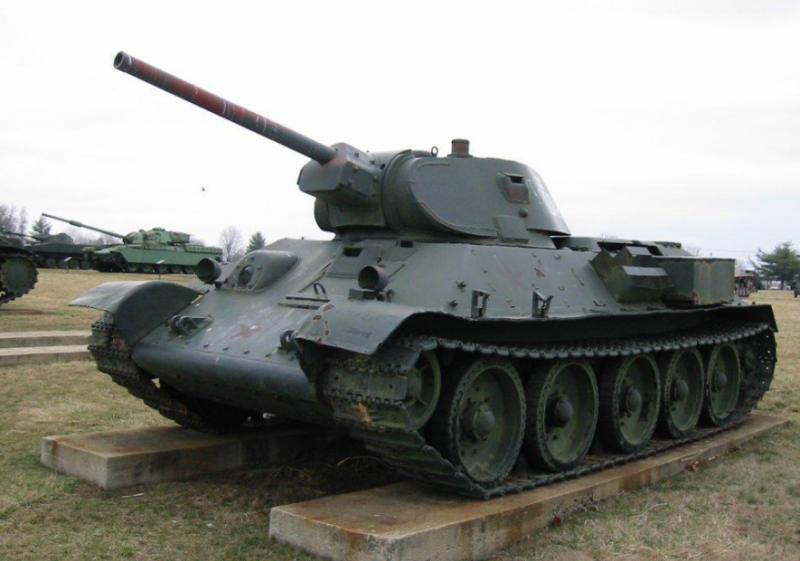
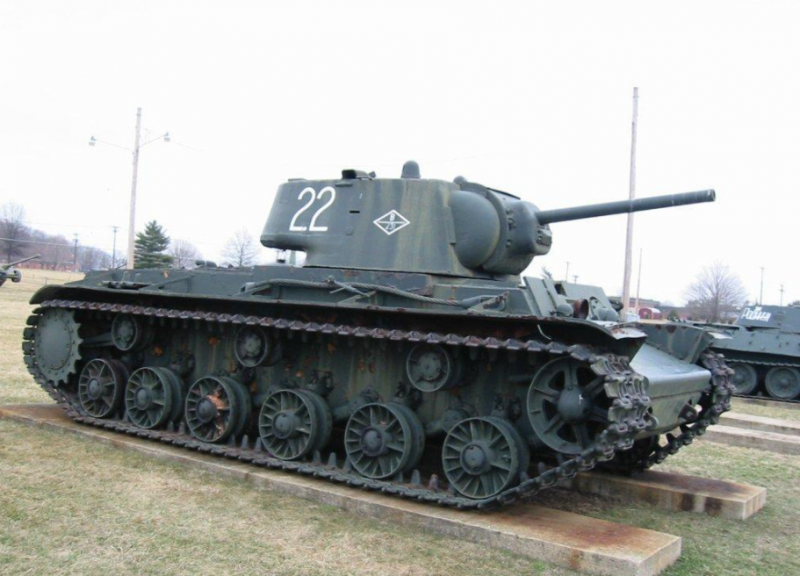
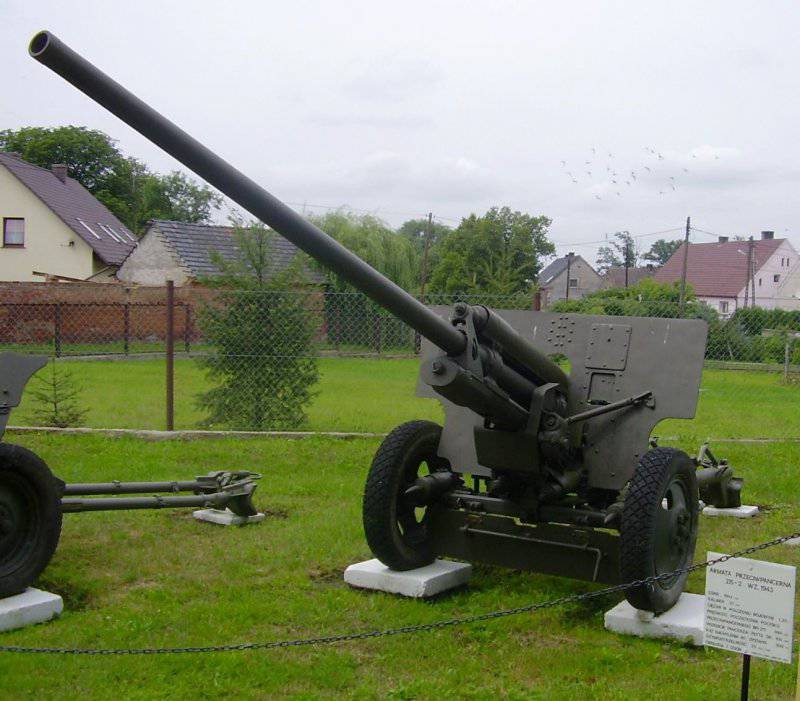
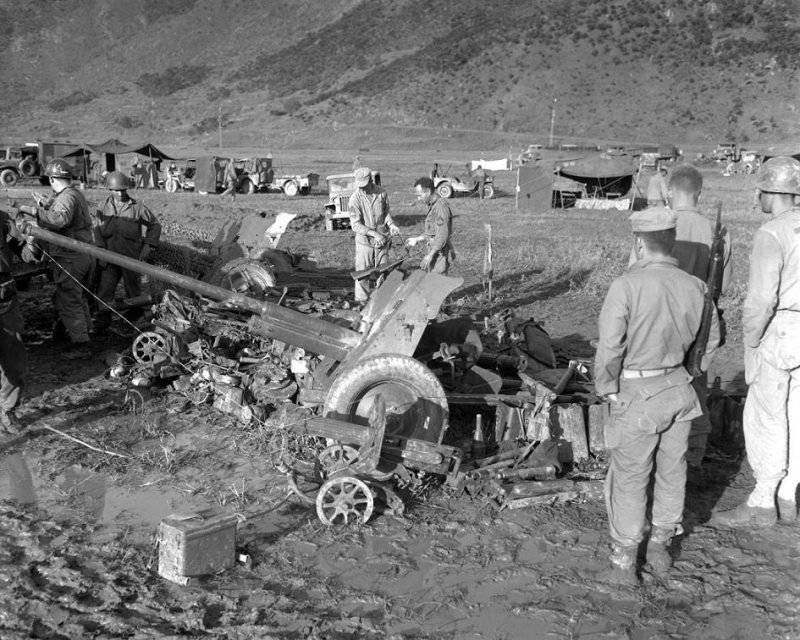
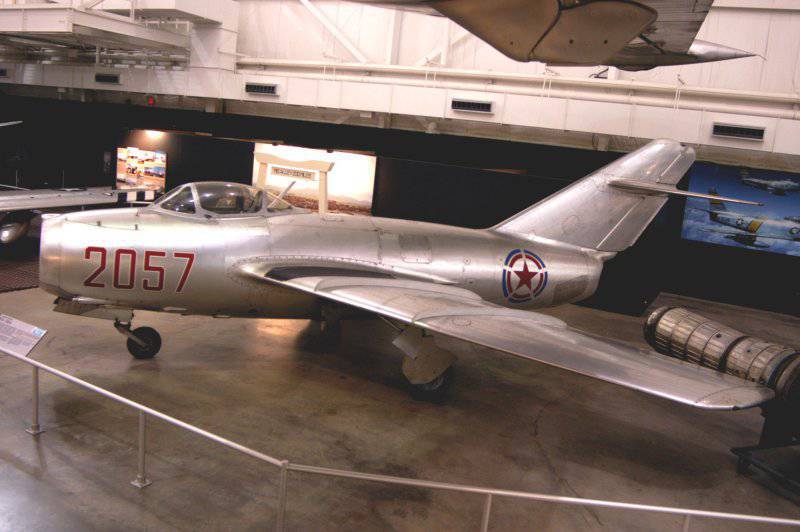
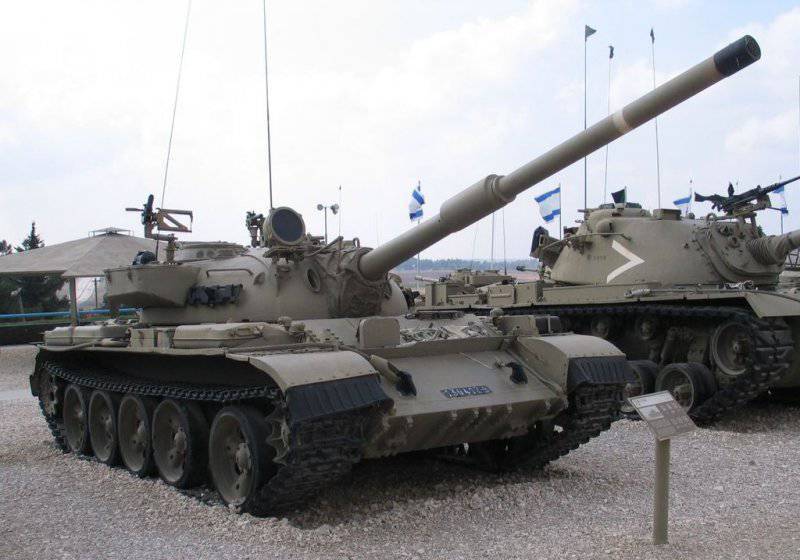
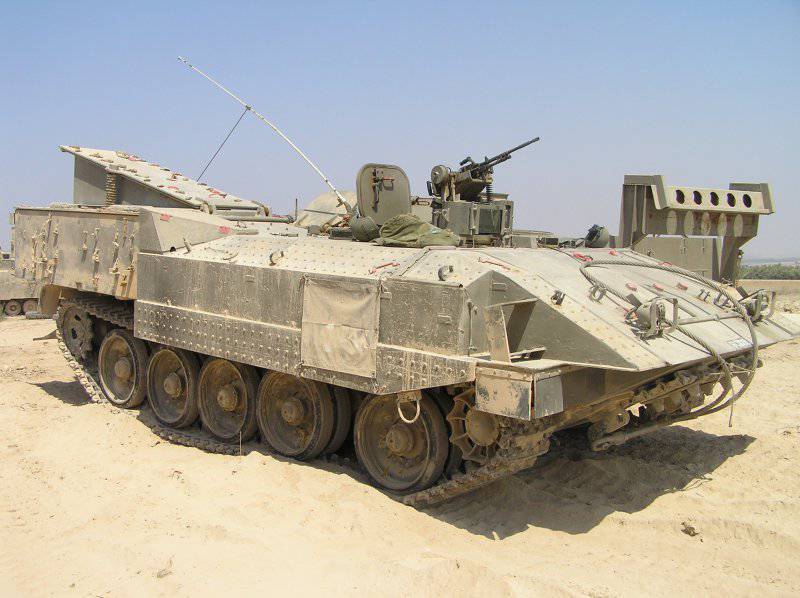
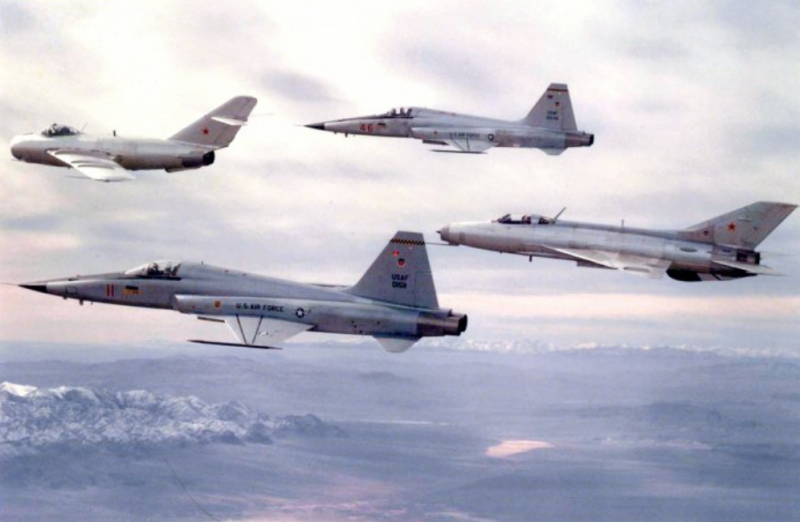
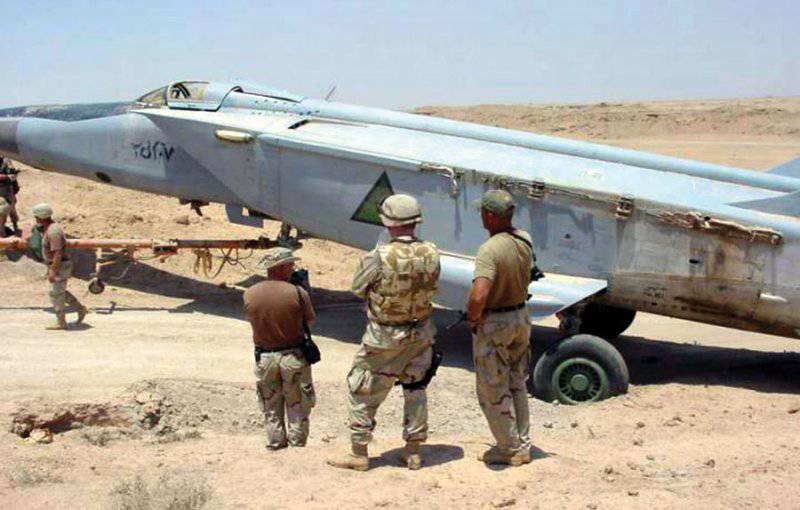
Information